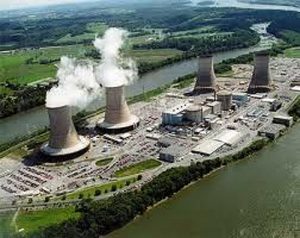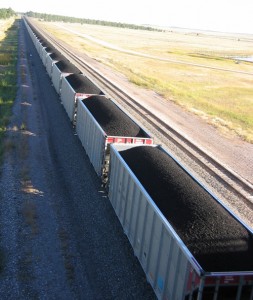
Our perpetual energy debate finds corporate interests defending their government subsidies. Nuclear electricity, “clean coal”, and corn-based ethanol are failed technologies that we’d never consider if cost-benefit decision-making applied. The subsidies, fueled by millions of dollars in campaign contributions, are the only reason that these technologies haven’t died.
Failed Methods for our Energy Future
Nuclear electricity — Taxpayers bear costs for nuclear-plant construction, insurance, waste disposal, and financial risk. American taxpayers provide annual subsidies amounting to more than 40% of the price of nuclear electricity. Proposed U.S. government subsidies promise $1 billion per new nuclear power station. Despite 50 years of operating experience, nuclear couldn’t compete with other generation technologies without these taxpayer funds. Worldwide, nuclear construction costs typically overrun their budgets by a factor of three. The average plant takes fourteen years to complete. Total federal subsidy: at least $8 billion annually.
“Clean Coal” — “Clean coal” is coal liquefaction and gasification. The liquid fuel would be used to power diesel vehicles. The last planned coal-to-liquid (CTL) demonstration project in the U.S. was killed by the Bush administration as too expensive. “Clean coal” requires the energy in half a ton of coal to liquefy a ton of coal and sequester its carbon. Coal gasification was a financial disaster when the government sponsored it 30 years ago. “Clean coal” plants cost at least $10 billion each and would likely suffer the same construction, finance, and insurance problems as nuclear. Current federal subsidy: $4 billion annually.

There is no economical way to make coal “clean” and coal-fired electricity remains the earth’s most dangerous environmental problem.
Carbon Sequestration — Carbon sequestration (as part of “clean coal”) is compressing the CO2 into a liquid and pumping it into the ground to reduce carbon emissions. Carbon sequestration won’t be ready for commercial implementation for 10 or 15 years, assuming billions in public dollars are spent for development.
Corn-based ethanol — Ethanol from corn is a mature technology, so why does it need large government subsidies? The corn-to-ethanol conversion requires almost as much fossil-energy input as the resulting ethanol energy output. The field-to-wheel process is so inefficient that less than 6 percent of the potential energy in the corn turns the wheels of the ethanol-powered vehicle. Current federal subsidies: $5 billion annually.
Alternatives for our Energy Future
The Alternative: Energy Conservation —At least half of the energy used in our buildings is wasted. Saving this energy with low-cost energy-conservation measures is the best way to improve our energy supply. Energy conservation also employs 2-3 times as many people, per million dollars invested, as coal or nuclear. Learn more about energy conservation and energy efficiency by reading our energy articles.

The costs for energy conservation and efficiency programs have increased dramatically in recent years. Both pre-treatment energy use and energy savings have declined. It seems to me that it is time for introspection and reevaluation of program designs. What would a truly cost-effective energy conservation and efficiency program look like?